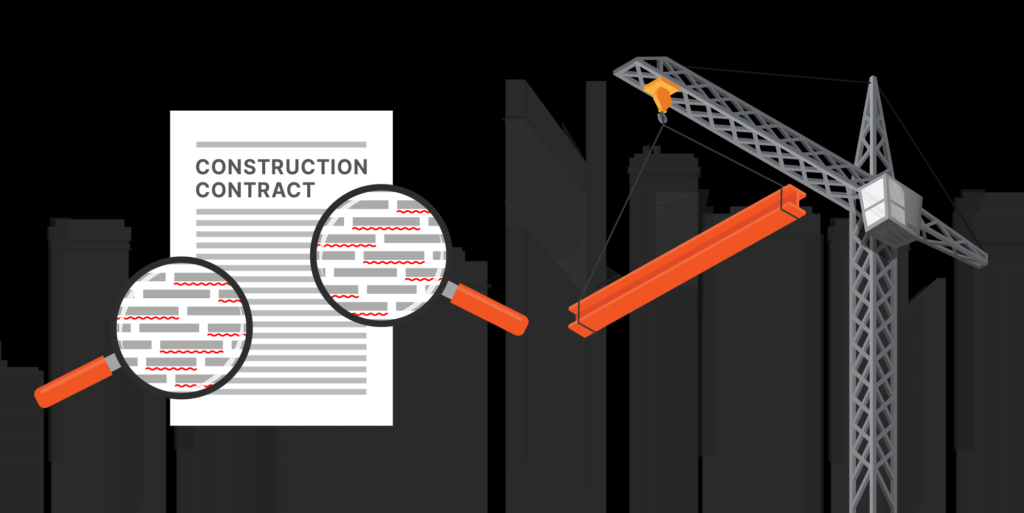— 5 min read
How to Write a Notice of Delay for a Construction Project: A Contractor’s Guide
Last Updated Jun 18, 2024
Dawn Killough
34 articles
Dawn Killough is a writer with over 20 years of experience in construction, having worked as a staff accountant, green building advisor, project assistant, and contract administrator. She holds a BA in Psychology and MS in Conflict Resolution, both from the University of Portland. She shares fundamental green building strategies and techniques in her book, Green Building Design 101. Dawn lives in Portland, Oregon.

Matt Viator
Matt Viator, Counsel for Procore Technologies, a Louisiana native who's settled in New Orleans after a brief stop in Baton Rouge. Matt joined the Levelset (a Procore Company) team as a 2016 and is a licensed Louisiana attorney with a J.D. from Tulane University Law School. Matt has extensive construction law knowledge surrounding contracts, payments, and more.
Last Updated Jun 18, 2024

Before making a claim to recover added costs or schedule time, contractors need to notify their customers that a delay has occurred. In most cases, a notice of delay is required in order to make a claim to extend the completion date or recover costs.
Let’s take a brief look at the types of delays on a construction project, review some delay notice contract clauses, and what to include in a notice of delay.
Table of contents
Types of delays
Construction delays are categorized by three characteristics:
- Was it critical?
- Could it have been avoided?
- Should the contractor be paid for it?
Critical delays affect the project completion date or some other important milestone, as they affect the critical path. They can’t be made up, so they lead to an extension of the project schedule. Noncritical delays affect the completion of specific activities, but don’t delay the overall completion of the project.
Excusable delays are out of the contractor’s control, like the weather. Most of the time these are listed in the contract as reasons for the project scheduled to be extended. Inexcusable delays are caused by the contractor’s actions, and don’t usually lead to a claim for added costs or a schedule extension.
Finally, if the party affected should be given an extension or compensation for the delay, it’s called a compensable delay. All excusable delays are compensable since they are out of the contractor’s control. Inexcusable delays are generally non-compensable.
Delay notice contract clauses
In order to know whether the contractor needs to send a notice, and when the deadline for sending a notice is, check the contract. Most contracts have clauses dealing with delays or notices of claims that spell out the requirements for submitting them. Because it can be hard to know how much of an effect a delay may have on the project, it’s a good practice to send a delay notice any time one occurs.
For example, let’s look at the Notice of Claims clause in the AIA A201, General Conditions:
Later clauses state that in order to make a claim for additional costs or additional time, the contractor must provide the notice according to section 15.1.3.1 above.
Here’s a similar clause with a much shorter deadline:
What to include in a notice of delay in construction
It’s important to clarify that a notice of delay is not a claim, however, it provides initial notification of grounds for a potential claim. Some contracts stipulate that the contractor cannot be compensated for delays unless a notice of delay was sent, so it pays to get in the habit of sending one any time there’s a delay.
Unless the contract states differently, a notice of delay can be sent via email or written correspondence, and should be sent to the party you are in contract with.
There are three things that should be included in the notice of delay.
1. Details of the delay
Include a short narrative describing what happened and how it caused a delay to the project, as well as an estimate of the amount of time the project will be delayed, if known.
2. Potential costs or results of the delay
If there’s a chance that the delay will add additional costs or require a schedule extension, provide as much information as possible about the effects. Costs should include labor, material, equipment, and overhead. If a schedule extension will be needed, give an approximate timeline.
3. Proof or evidence to substantiate the claim
You need to provide backup documentation to substantiate the cause and potential effects of the delay. This may include photos of any damage, weather reports, correspondence with vendors or contractors, copies of invoices, or other documents.
Send notices anytime there’s a delay
Since notices of delay in construction are often required by contract, it’s important that contractors review these sections and understand the deadlines and requirements for sending such notices. Even if you don’t have all the information regarding the delay and its possible effects, it pays to be proactive and notify the project team.
If you have questions regarding a contract, a particular clause, or are in a situation caused by a delay, it pays to consult a construction attorney. They can provide you with the guidance you need and let you know your alternatives.
Was this article helpful?
Thank you for your submission.
89%
11%
You voted that this article was . Was this a mistake? If so, change your vote
Scroll less, learn more about construction.
Subscribe to The Blueprint, Procore’s construction newsletter, to get content from industry experts delivered straight to your inbox.
By clicking this button, you agree to our Privacy Notice and Terms of Service.
Thank you!
You’re signed up to receive The Blueprint newsletter from Procore. You can unsubscribe at any time.
Categories:
Written by
Dawn Killough
34 articles
Dawn Killough is a writer with over 20 years of experience in construction, having worked as a staff accountant, green building advisor, project assistant, and contract administrator. She holds a BA in Psychology and MS in Conflict Resolution, both from the University of Portland. She shares fundamental green building strategies and techniques in her book, Green Building Design 101. Dawn lives in Portland, Oregon.
View profileReviewed by

Matt Viator
Matt Viator, Counsel for Procore Technologies, a Louisiana native who's settled in New Orleans after a brief stop in Baton Rouge. Matt joined the Levelset (a Procore Company) team as a 2016 and is a licensed Louisiana attorney with a J.D. from Tulane University Law School. Matt has extensive construction law knowledge surrounding contracts, payments, and more.
View profileExplore more helpful resources

Using Standard Operating Procedures for Better Contract Management
Every construction project is different, meaning that GCs have to be continually agile and strategic about applying their experience. Major categories change from project to project, from the owner to...

Understanding Supplementary Conditions on Construction Contracts
No two construction projects are exactly alike — and the same goes for construction contracts. Even when using a standard contract form, owners and contractors sometimes use supplementary conditions to...

A Straightforward Guide to Construction Contract Review
Construction contracts are like the glue for the project team. They’re the ties that bind the working relationships and goals for the project, containing information about responsibilities, liabilities and processes...

Escalation Clauses in Construction Contracts: When and How They Apply
In construction contracts, an escalation clause allows for the escalation of a certain price for labor or materials to be used in a construction project. This type of clause is most...
Free Tools
Calculators
Use our calculators to estimate the cost of construction materials for your next project.
Templates
Find a template to help you with your construction project tasks.
Material Price Tracker
Get the latest U.S. retail prices and view historical trends for common building materials.
Glossary
Explore key terms and phrases used in the industry.
